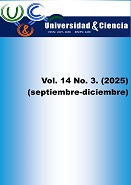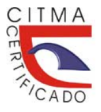Evaluation of alternatives for controlling Varroa destructor in honeybees (Apis mellifera)
DOI:
https://doi.org/10.5281/zenodo.17177390Keywords:
apis mellifera, formic acid, lithium chloride , oxalic acid, varroa mitesAbstract
Introduction: Beekeeping is important for honey production and crop pollination. However, it faces several problems related to hive health, such as infestation by Varroa destructor, a mite that seriously affects the health of bees. Objective: To evaluate the effectiveness of three chemical alternatives (formic acid 65 %, oxalic acid 10 %, and lithium chloride 10 %) in controlling Varroa destructor and their impact on the health of honeybees (Apis mellifera). Method: The study took place at the ESPOCH "Tunshi" Experimental Station for 45 days. Sixteen Langstroth hives were used, with four experimental groups (control and three treatments). A preliminary diagnosis was performed to assess the level of varroa infestation, and 16 hives with similar levels of varroa were selected. The variables were measured: Number of fallen mites, infestation percentage, treatment efficacy, hive weight, and mortality adult and brood bees were assessed. Analysis of variance and separation of means using Tukey's test (P < 0.01) and (P < 0.05) were performed. Results: 10 % lithium chloride was most effective (93.14 %) in reducing Varroa destructor, followed by formic acid (72.86 %) and oxalic acid (60.07 %). Treatment with lithium chloride showed the lowest mortality of adult and brood bees without significantly affecting hive weight. Conclusion: 10 % lithium chloride is a promising alternative for Varroa destructor control, with high efficacy and low impact on bee health.
Downloads
References
Boncristiani, H., Ellis J., Bustamante, T., Graham, J. Jack, C., Kimel, C., y Schmehl, D. (2021). Salud mundial de las abejas melíferas: distribución global de plagas y patógenos de las abejas melíferas occidentales (Apis mellifera L.). Mundo de las abejas. 98 (1), 2–6. https://doi.org/10.1080/0005772X.2020.1800330
Díaz, B., Moyón, J. y Baquero, M. (2019). Evaluación de tres alternativas para el control de varroasis (Varroa destructor) en apiarios ecuatorianos. Universidad Pedagógica y Tecnológica de Colombia. Ciencia y Agricultura. 16(1), 63-78. https://doi.org/10.19053/01228420.v16.n1.2019.8832
Domínguez, I., Flores, B., Mala, C., y Espinoza, V. (2023). Manejo y conservación de las abejas meliponas (Hymenoptera: meliponini) en la Amazonía ecuatoriana. Prometeo Conocimiento Científico. 3, (1), 20. https://doi.org/10.55204/pcc.v3i1.e20
Guamán, A., Herrera, J., Baquero, M., Benavides, J., Erazo, F., Tobar, M., y Sánchez, M. (2024). Varroa Destructor Control In Apis Mellifera Bees Through Different Lithium Chloride Doses – Implications For Andean High Altitude. Revista de Gestão Social e Ambienta. 18(6), e05433. https://doi.org/10.24857/rgsa.v18n6-100
Kolics, E., Specziár, A., y János, T (2021). El cloruro de litio superó la sublimación del ácido oxálico en un experimento preliminar para el control del ácaro Varroa en colonias de abejas melíferas antes de la hibernación. Acta Veterinaria Húngara. 68 (4), 370-373. https://akjournals.com/view/journals/004/68/4/article-p370.xml#F1
Masaquiza, D., Vargas, J., Ortíz, N., Salazar R., Curbelo, L., Pérez, A., y Arenal, A. (2021). Hygienic Behavior of Apis mellifera and Its Relationship with Varroa destructor Infestation and Honey Production in the Central Highlands of Ecuador. Insects, 12(11), 966. https://doi.org/10.3390/insects12110966
Negroni, M., y LeBoeuf, A. (2023). Metabolic division of labor in social insects. Current Opinion in Insect Science. 59, 101085. https://doi.org/10.1016/j.cois.2023.101085
Prešern, J., Kur, U., Bubnič, J., y Šala, M. (2020). Lithium contamination of honeybee products and its accumulation in brood as a consequence of anti-varroa treatment, Food Chemistry. 330, 127334. https://doi.org/10.1016/j.foodchem.2020.127334
Reams, T. y Rangel, J. (2022). Entendiendo al enemigo: una revisión de la genética, el comportamiento y la ecología química de Varroa destructor, el ácaro parásito de Apis mellifera. Revista de ciencia de insectos. 22(1), 18. https://academic.oup.com/jinsectscience/article/22/1/18/6523143
Rein, C., Blumenschein, M., Traynor, K., y Rosenkranz, P. (2024). Tratamientos con cloruro de litio en colonias de abejas melíferas en vuelo libre: eficacia, supervivencia de crías y distribución intracolonial. Parasitol Res. 23, 67. https://doi.org/10.1007/s00436-023-08084-y
Rosenkranz, P., Aumeier, P., y Ziegelmann B. (2010). Biología y control de Varroa destructor. Revista de patología de invertebrados. 103, 96-119. https://doi.org/10.1016/j.jip.2009.07.016
Traynor, K., Mondet, F., Miranda, J., Oddie, M., Kowallik, V., Chantawannakul, P., y McAfee, A. (2020). Varroa destructor: un parásito complejo que paraliza a las abejas melíferas en todo el mundo. Trends in Parasitology. 36(7), 592-606. https://www.cell.com/trends/parasitology/fulltext/S1471-4922(20)30101-X
Vargas, J., Lluglluna, E., Flore, P., y Barrionuevo, D. (2024). Diagnóstico y prevalencia del ácaro Varroa Destructor en Apiarios de Apis Mellifera en el Límite Provincial de Tungurahua y Pastaza. Ciencia Latina: Revista Multidisciplinar. 8(2), 4861-4875. https://dialnet.unirioja.es/servlet/articulo?codigo=9503009
Warner, S., Pokhrel, L., Akula, S., Ubah, S., Richards, S., Jensen, H., y Kearney, G. (2024). A scoping review on the effects of Varroa mite (Varroa destructor) on global honey bee decline, Science of The Total Environment. 906, 67472. https://doi.org/10.1016/j.scitotenv.2023.167492.
Yépez, Á., Verdezoto, C., Morales, D., Cabezas, R., Yépez, A., Vera, J, Palma, P., Zambrano F. y Chamorro A. (2024). Control de varroasis en abejas melíferas utilizando acaricida natural a base de aceite de Neem, una solución ecológica y eficaz. Revista de Veterinaria y Zootecnia Amazónica. 4(2), 750.
Ziegelman, B., Abele, E., Hannus, S., Beitzinger, M., Berg, S., y Rosenkranz, P. (2018). Lithium chloride effectively kills the honey bee parasite Varroa destructor by a systemic mode of action. Scientific Report.s. 8, 683. https://www.nature.com/articles/s41598-017-19137-5
Downloads
Published
How to Cite
Issue
Section
License
Copyright (c) 2025 Universidad & ciencia

This work is licensed under a Creative Commons Attribution-NonCommercial-ShareAlike 4.0 International License.





















